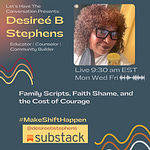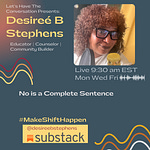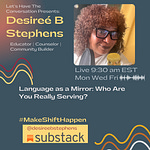The Work Doesn't End—It Evolves
Liberation is not a singular moment. It is not a finish line we cross and never have to think about again. Instead, it is an ongoing process—one that requires sustainable systems designed to grow, adapt, and meet the needs of future generations.
We are watching systems collapse around us. Capitalism, white supremacy, extractive labor structures—these are crumbling under the weight of their own dysfunction. But the question is: What are we building in their place?
We cannot afford to react only when the collapse happens. If we wait until we are in survival mode, we will be scrambling instead of stepping into a future we have already built for ourselves.
This is what today’s conversation is about—designing liberation systems that last.
If you’re here, I know you care about this work. But are you ready to go deeper? Paid subscribers gain access to:
Expanded reflections that take these ideas beyond theory into actionable steps.
Practical exercises to implement these principles in your home, work, and self.
Bonus tools and resources to help you build sustainable community structures.
Upgrade to a paid subscription today and take the next step in your liberation journey.
A Free Preview of Today’s Conversation
Sustainability, Shared Responsibility & Rest
We are not just fighting oppressive systems—we are building something new. To do that, we need to understand how sustainable liberation works.
Let’s start here: Sustainability is about long-term vision. The goal is not to create short-term change that burns out the people doing the work. The goal is to embed liberation into the fabric of our daily lives, our homes, our communities, and the way we care for one another.
Listen to this excerpt from today’s discussion:
"One, sustainability is about long-term vision. Two, shared responsibility prevents burnout. I don’t do this alone. I couldn’t do this work alone. And when I feel like I’m doing this work alone, I call people in."(00:01:38 – 00:01:54)
"We are watching systems collapse, and we should already be building their replacements. We need to know: Am I going to be taken care of? Will we have some level of healthcare? Whatever your level of care looks like, you need to ensure that it’s included in your parallel system." (00:01:19 – 00:01:33)
This is what building parallel systems looks like—it is designing alternative structures that are not reliant on the systems of oppression we seek to dismantle.
If this resonates with you, keep reading for:
How to implement sustainable liberation at home, work, and in self-development
The role of shared responsibility in preventing burnout
Why rest and renewal are essential components of change
But if you really want to integrate these lessons into your life and work, unlock the full version of this article by upgrading to a paid subscription today.












